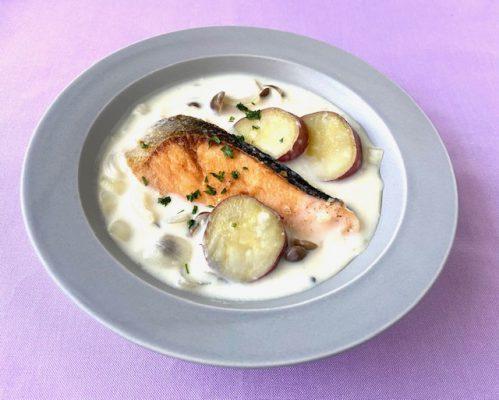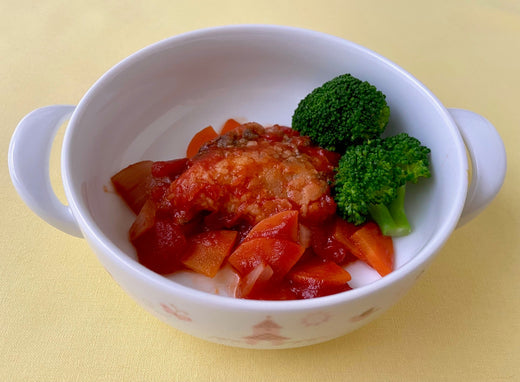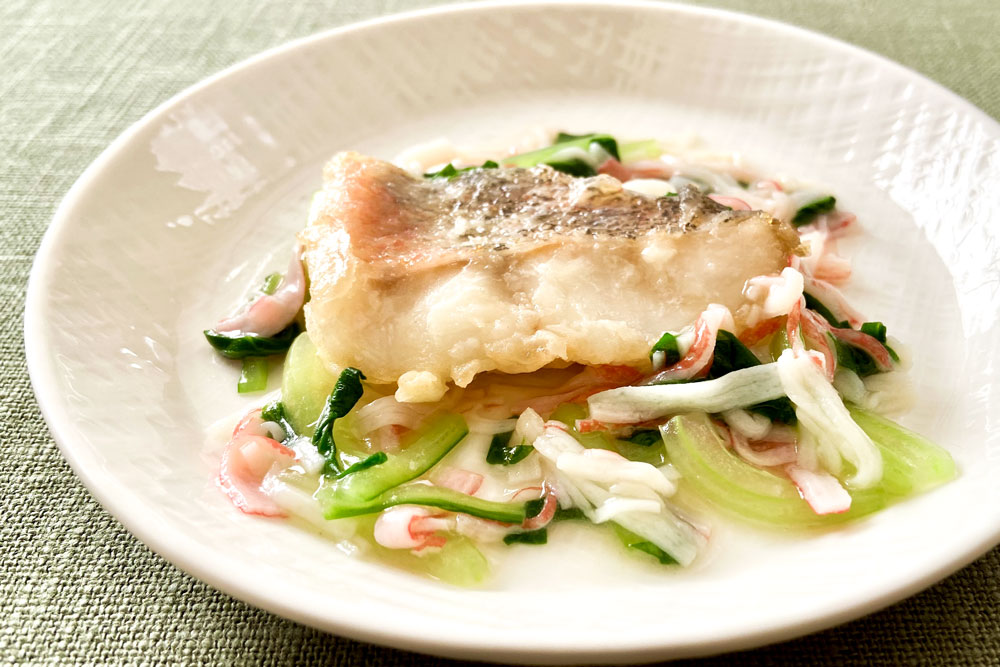Fish Dictionary | Squid
Why squid?
✓ Part 1: What is a cargo ship?
Many Chinese-registered fishing vessels operating off the coast of Peru for jumbo squid operate year-round in conjunction with Argentine pine squid fishing in the southwest Atlantic. They mainly operate off the coast of Argentina from January to March, which is the main season for Argentine pine squid fishing, and then move to the coast of Peru to operate in conjunction with the main season for jumbo squid fishing from June to August.
This type of fishing, which takes place far away, such as across the Pacific Ocean off the coast of Peru, is called deep-sea fishing. During this time, fishing boats and intermediate cargo vessels communicate via radio to ensure efficient operations. Fishing boats catch squid, remove their internal organs, and freeze them on board. The intermediate cargo vessels, contacted by radio, collect the squid from the fishing boats' freezers and return to their home countries. It takes about a month for Chinese vessels to travel from China to the coast of Peru. Therefore, three to six intermediate cargo vessels are constantly on the move, collecting squid from the fishing boats' freezers and quickly transporting them to ports near their home countries' processing plants.
✓ Part 2: Where and how do you catch squid?
Squid fishery is conducted by boat freely within 200 nautical miles from the coast of one's own country and on the high seas (oceans outside the 200-nautical-mile zone from the coast of other countries), and the fishing industry adheres to rules set out in international treaties.
The 200-nautical-mile fishing zone is a treaty established in 1977 under the United Nations Law of the Sea, which states that coastal countries do not allow other countries to freely operate within a zone 200 nautical miles (approximately 370 km) from their coasts. Japan's deep-sea fishing industry was hit hard by this treaty, which meant that it could no longer fish freely, and it went into decline.
Squid fishing is called "squid fishing" and involves turning on fishing lights at night to attract squid, then using an automatic squid fishing machine to drop a squid hook into the sea and catch the squid as it is pulled up. The caught squid are separated on deck into organs, legs, and ears, and then frozen by part on board the boat.
Typically, Chinese squid processing factories have their own squid fishing boats and, by belonging to fishing cooperatives, use the functions of intermediate ships to send raw materials to their factories. Okafoods has long-term purchasing contracts with specific squid processing factories, ensuring a stable supply of raw materials and squid products to its customers.
✓ No. 3 What is a squid quota? Why does the importer's name change depending on the lot?
The quota is an import quota system that limits the quantity of 19 specific items (squid, mackerel, sardines, yellowtail, horse mackerel, saury, herring, etc.) produced overseas that can be imported into Japan. The purpose is to limit foreign competition by restricting imports and protect domestic producers. This increases the prices of imported goods, making domestic products more competitive for consumers. The quotas for the 19 items are issued annually.
Squid products also require a squid quota (import quota) when importing into Japan. Because there is a limit to the number of squid quotas that can be issued by each company, we import squid products by combining those that use Oka Foods' own squid quota (importer name: Oka Foods) with those that are imported on our behalf by various cooperatives and trading companies (importer name: import agency name). Therefore, the importer name displayed on the overall label changes each time depending on the lot.
☝Squid trivia
Jumbo squid come in a variety of sizes! It varies depending on habitat and fishing season.

They live widely in the eastern Pacific Ocean, with the catch in the waters of Peru and Chile accounting for more than 90% of the world's total. Small fish are found off the coast of California and Mexico, while medium to large fish are found off the coast of Peru.
The fishing season and catch sizes off the coast of Peru are small (2-4 kg) from March to May, medium (5-9 kg) from June to August, and large (over 10 kg) from September onwards, with catches year-round. Generally, larger fish are said to have a more bitter taste. Furthermore, research is currently ongoing to suggest that the lifespan of squid is one year, with larger squids possibly reaching 1.5 to 2 years.
☝Squid trivia
Types of squid! If you know this, you're a squid too!!

This is the key to Okafoods' squid!
✓ No. 1: How to prevent squid from shrinking No. 1
The cuttlefish body is open and is called "Betta". Okafoods' squid products are processed with "one-sided kanoko, with back sinew". By adding diagonal sinew (kanoko) on both sides of the outside of the squid (opposite the innards) and vertical sinew (back sinew) on the inside of the squid (innards side), the squid is prevented from shrinking.
We use a kanoko inserting machine to cut the squid's kanoko and process the inner sinew. As the flesh of squid betta tends to be thin around the spine and thick around the internal organs, there is variation in the finished kanoko and inner sinew depending on the part. In areas where it is difficult to cut the kanoko and inner sinew, we manually insert the lines to reduce variation. *The name "kanoko" (fawn) on squid products comes from the fact that they resemble a type of knitting technique called kanoko (a knitting technique in which knit and purl stitches are alternately arranged up, down, left, and right to create a kanoko pattern). Kanoko refers to a brownish-brown fabric with scattered white spots, similar to the spots found on deer fur.
✓ Part 2: How to prevent squid from shrinking Part 2
When squid is heated, its head and body tend to curl up and shrink. Therefore, when designing the product, we took into consideration the characteristics of squid betta, and made sure that the short side of the rectangular fillet was aligned with the top and bottom of the squid betta, as this would cause the fillet to shrink if processed with the long side aligned with the top and bottom of the squid betta.

✓ Tip 3: How to peel the squid skin
Squid skin has a two-layer structure, consisting of an outer skin (red) and a thin skin (translucent white). The outer skin is peeled off during the skin peeling process for squid fillets, squid strips, and fried squid products, but this is all done by hand. Wearing gloves with a special anti-slip surface, the squid belly is carefully and gently rubbed off each layer.
Characteristics of squid
✓ No. 1: Can names according to the growth stage and season be displayed on the menu?
The blood of mollusks such as squid is colorless and transparent, but after death, when the copper contained in the hemocyanin in the blood combines with oxygen, it turns blue, black, etc. This discoloration is a component inherent in the squid itself, so it is harmless to humans when eaten. Also, discoloration caused by squid blood can disappear when heated. (In humans, the iron contained in the hemoglobin in the blood combines with oxygen and turns red.)
✓ No. 2: There are yellow, foreign-looking spots on the surface of the squid product?
The luminous bodies of squid are mostly found on the ventral side of the body, and are yellow, rice-grain-shaped bodies embedded in the flesh. Depending on the individual squid, the luminous bodies may not be very noticeable, or may be scattered all over the surface. One theory is that the fresher the squid, the more luminous bodies there are. Furthermore, since the luminous bodies are no different from other parts of the flesh, they are not "parasites" or "deterioration of freshness," and are harmless to humans when eaten.
✓ No. 3: There are spines or teeth in the suction cups on the squid's lower legs?
Squids have 10 legs, the two long ones of which are called tentacles. They use the long tentacles to catch prey and the remaining eight to pull it in. The inside of the suction cups on the squid's lower legs have teeth called "horny rings," which the squid uses to bite down on prey. The "horny rings" soften and shrink when heated, so they are barely noticeable when cooked before eating.
✓ No. 4 After cooking, something translucent and chewy appeared?!
Squid skin has a two-layer structure, consisting of an outer skin (red) and a thin skin (translucent white). Squid #5: Why are some jumbo squid products mixed with white or amber-colored flesh?! For fillets, squid strips, and fried squid products, the outer skin is peeled during the peeling process, but the thin skin underneath (translucent white) is not removed. Therefore, when cooked in tempura or fried squid, the thin skin tends to shrink and turn white due to the high temperature of the oil, but this is safe to eat.
✓ No. 5: Why are there some jumbo squid products with white or amber flesh?
Squid skin has a two-layer structure, consisting of an outer skin (red) and a thin skin (translucent white). Squid #5: Why are some jumbo squid products mixed with white or amber-colored flesh?! For fillets, squid strips, and fried squid products, the outer skin is peeled during the peeling process, but the thin skin underneath (translucent white) is not removed. Therefore, when cooked in tempura or fried squid, the thin skin tends to shrink and turn white due to the high temperature of the oil, but this is safe to eat.
✓ Part 6: The ammonia smell of jumbo squid after thawing and the bitterness after cooking
Large jumbo squids can grow to over 2 meters in length. They can dive to depths of several hundred meters, and large squid use the ammonium chloride in their bodies to adjust their buoyancy. The larger the body length, the greater the ammonium chloride content, which causes an ammonia smell and bitter taste. However, this ammonium chloride is naturally contained in the squid, so there is no harm in eating it.
For some products that use large ingredients, odors and bitterness are removed during the manufacturing process.















